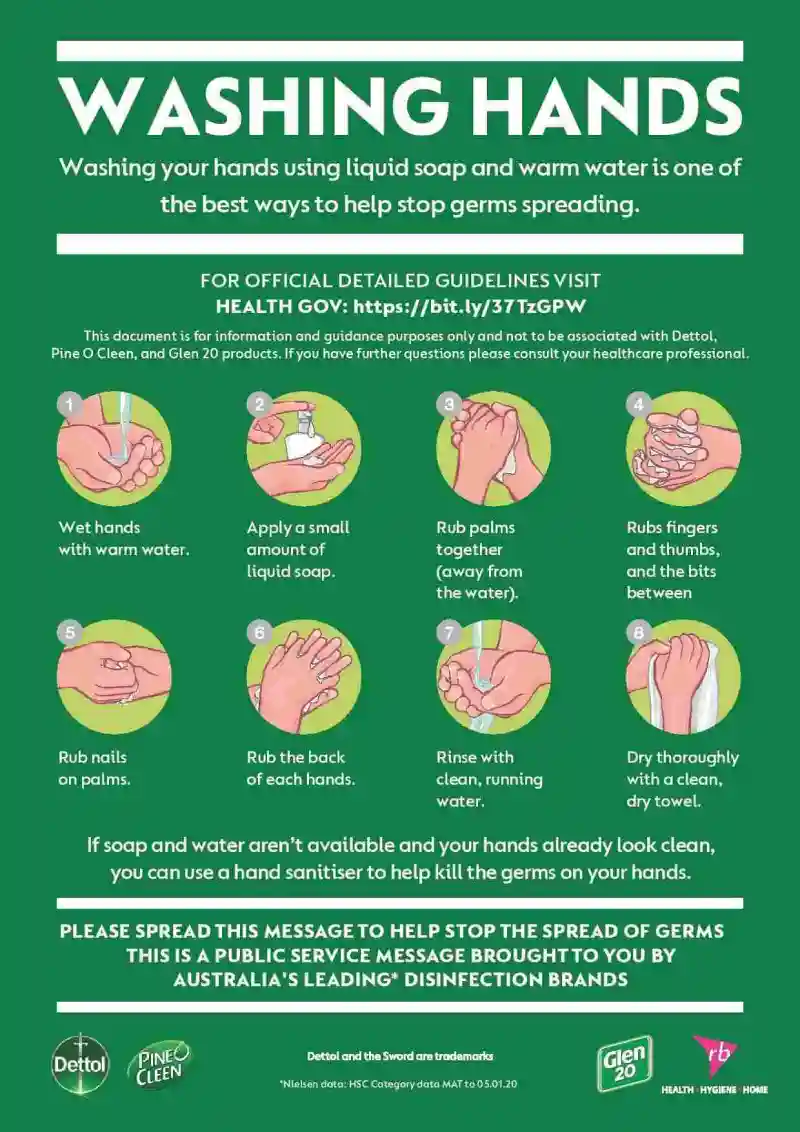Hand Sanitiser Vs Washing Hands with Soap Water
- Hand sanitiser vs soap
- How does hand sanitiser work?
- What to look for in a hand sanitiser
- When not to use hand sanitiser
- Is it more effective to handwash with soap and water vs hand sanitiser?
- What is the best handwashing procedure?
- FAQ: How to wash your hands
Hand sanitiser vs soap
| When should I use... | |
|---|---|
Soap and Water
|
Alcohol-based Hand Sanitiser
DO NOT use hand sanitiser if your hands are visibly dirty or greasy – for example, after gardening, playing outdoors, fishing, or camping. Hand sanitiser is only effective if your hands have no visible dirt on them. If a handwashing station is available, wash your hands with soap and water instead. |
| How do I use it? | |
Soap and Water
|
Alcohol-based Hand Sanitiser
Do NOT rinse or wipe off the hand sanitiser before it’s dry – it may not work well against germs. |
How does hand sanitiser work?
Hand sanitisers (60–80% alcohol) contain ingredients which work in two main ways:
- Substantially reduces number of bacteria on your hands
- Excellent at killing bacteria
What to look for in a hand sanitiser
It is recommended that you consider the following when choosing a hand sanitiser:
- What’s in it – the effectiveness of hand sanitiser depends on the amount of alcohol in it, you want something that has at least 60% alcohol (e.g. ethanol or isopropyl alcohol).
- The container it comes in – this is important if you have small children around as hand sanitiser can be
dangerous if swallowed. - Buying online – be careful as the hand sanitiser may not do or contain different ingredients to what the
advertiser says it does on their website. - Check any claims – if a hand sanitiser says it can kill specific germs (e.g. E. coli) then the label should have an AUST R number, meaning the TGA has checked these claims and agreed to them.
Dettol’s range of instant hand sanitisers kill 99.9% of germs without water.
When not to use hand sanitiser?
Hand sanitisers should not be used when hands are visibly dirty, otherwise they won’t be effective.
Which is better, soap or hand sanitizer?
Using soap and water is the most effective way to wash your hands and is recommended wherever possible, while hand sanitisers are recommended when soap and water are not available.
What is the best hand washing procedure?
Here are the hand washing steps to help you avoid the spread of germs:
- Wet hands with warm water.
- Apply enough soap to cover all hand surfaces.
- Rub palms together (away from the water).
- Rubs fingers and thumbs, and the bits between.
- Rub nails on palms.
- Rub the back of each hand. You should scrub your hands for at least 20 seconds in total.
- Rinse with clean, running water.
- Dry thoroughly with a clean towel or paper towel.
FAQ: How to wash your hands
When should you wash your hands?
It’s important to wash your hands before touching anything that needs to stay clean, or after touching anything that might contaminate your hands. For a more detailed list of when to wash your hands, check out our list of when to use soap and water vs when to use hand sanitiser above.
How often do we wash our hands?
That depends on your daily routine, how many people you interact with, and whether you are touching lots of communal objects or using public transport. In all these instances, be sure to wash your hands properly or use a hand sanitiser if they aren’t visibly dirty and there’s no soap and water around.
Why is it important to wash your hands?
Germs are everywhere and can get onto your hands when you touch things throughout the day. Washing your hands is one of the most important things you can do to avoid spreading germs and to stop germs entering your body.
Does hand sanitiser kill bacteria?
Yes – the alcohol in hand sanitiser kills bacteria.
How to use hand sanitiser?
Read the label and put the recommended amount of sanitiser on your hands. Rub your hands together for around 30 seconds – until they feel dry.
References: 1. Centers for Disease Control and Prevention. Hand sanitizer use out and about. Available here. 2. Healthdirect Australia. Hand washing. Available here. 3. Hand Hygiene Australia. Alcohol-based handrubs. Available here. 4. Therapeutic Goods Administration. Hand sanitisers: information for consumers. Available here.
RB-M-35081
First published:
Last updated:

